I am now in Italy’s last remaining city state, San Marino.
I spent an uneventful night in the deserted bus station car park in Urbania, but I was a little surprised when I pulled the curtains in the morning to find the car park, having been empty the night before, was now full ,and a busy Sunday morning market going on !
I spent an uneventful night in the deserted bus station car park in Urbania, but I was a little surprised when I pulled the curtains in the morning to find the car park, having been empty the night before, was now full ,and a busy Sunday morning market going on !
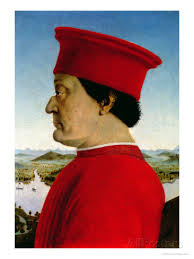
Setting off, in a few minutes I was in Urbino. This is a small place, but of great interest because it had a brief spell of prosperity during the renaissance, before becoming a backwater, and because of this its unified town plan and architecture of the period remain pretty much untouched. It does host a university, but its particular feature is the Ducal Palace, built by Duke Frederico da Montefeltro in the mid-1400s.We all recognise him from his famous side profile portrait by Piero della Francesca, which is in the Uffizi, Florence. He gathered together scholars, architects and artists of the period. The city walls were designed by Leonardo da Vinci. The painter Raphael was born here, his father responsible for many of the frescos in the palace, now mostly disappeared.
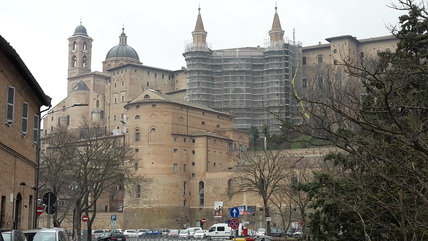 Lostintransit (bottom centre)dwarfed by the Ducal palace, Urbino
Lostintransit (bottom centre)dwarfed by the Ducal palace, Urbino To walk up into the city involves a very steep climb, but as it was an extremely chilly morning, threatening rain, the effort was welcome. The Palace, a massive edifice when seen from below the city, is actually on a human scale inside. I was interested to see a room named “The King of England’s room” where James III (sic) had stayed. There was of course no such king and ”James III” was the Old Pretender, the father of Bonnie Prince Charlie (the Young Pretender), who had taken refuge in Italy around 1600.His mother had been Mary of Modena,who was the Italian second wife of James II
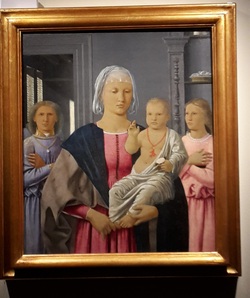 Piero della Francesca's Madonna di Senigallia
Piero della Francesca's Madonna di Senigallia There was the usual quantity of religious art from the 15th century, but I was pleased to see a couple of Piero della Francesca’s smaller paintings.I had followed his trail round Umbria 18 months ago-his frescos in the Azezzo Duomo, and pictures in Sansepulco, and Monterchi (the Madonna del Parto), so I’ve now added some more to the tally. I’m not sure whether they were as good as the one they had to flog off in Downton Abbey, though!
One of the main treasures, Raphael’s ‘La Muta’ was unfortunately away on loan.
One of the main treasures, Raphael’s ‘La Muta’ was unfortunately away on loan.
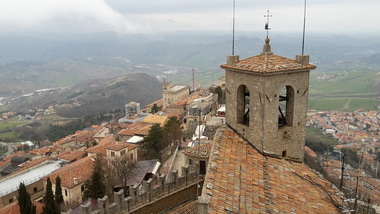 San Marino ,from its highest point on Monte Titano
San Marino ,from its highest point on Monte Titano Before I left Urbino I had a Sunday lunch of roast lamb chops with rosemary and roast potatoes served with a free view of the palace, although the food, while good, did take ages to come. As I ate, the promised rain arrived. I then headed on for San Marino but I chickened out of the direct 40 km route the satnav wanted to take me across the hills, guessing that because the as-the-crow flies distance was half that ,it would involve considerable hairpinning climbs. Instead I took the easy route down to the coast motorway, along that a bit until just short of Rimini, then up the main road to San Marino, which was 70km but it was an easy drive. I am staying on San Marino’s only campsite(so far as I know),"Campsite Centro Vacanze San Marino".As no buses run here on Sundays, I drove up the hill towards the old walled citadel, the main point of interest ; this is perched on a steep mountain, Monte Titano.
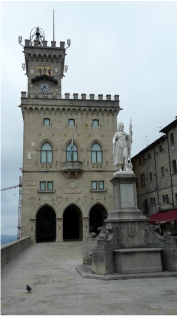 The Palazzo Publico
The Palazzo Publico I missed out on the cable car up to the city as the campervan carpark was a couple of hairpin bends higher up the hill than the base of the cable car, but fortunately from where I parked there were a series of lifts up the cliff to the little walled city. This is obviously just a tourist attraction now. It is a picturesque town, with very steep winding lanes. Apart from restaurants, there were nothing but souvenir shops, shops selling replica weapons of all types and dangerous looking knives, and, for some reason I can’t explain, optician’s shops. San Marino gets Unesco World Heritage status because of its history as one of the world’s oldest republics and representative democracies. The little fortress ,La Rocca, perched right on top of the mountain peak, was actually in the mist as I climbed the final ladder in the top tower, but in the distance I could see the sea at Rimini. On a clear day you are supposed to be able to see the Croatian coast.
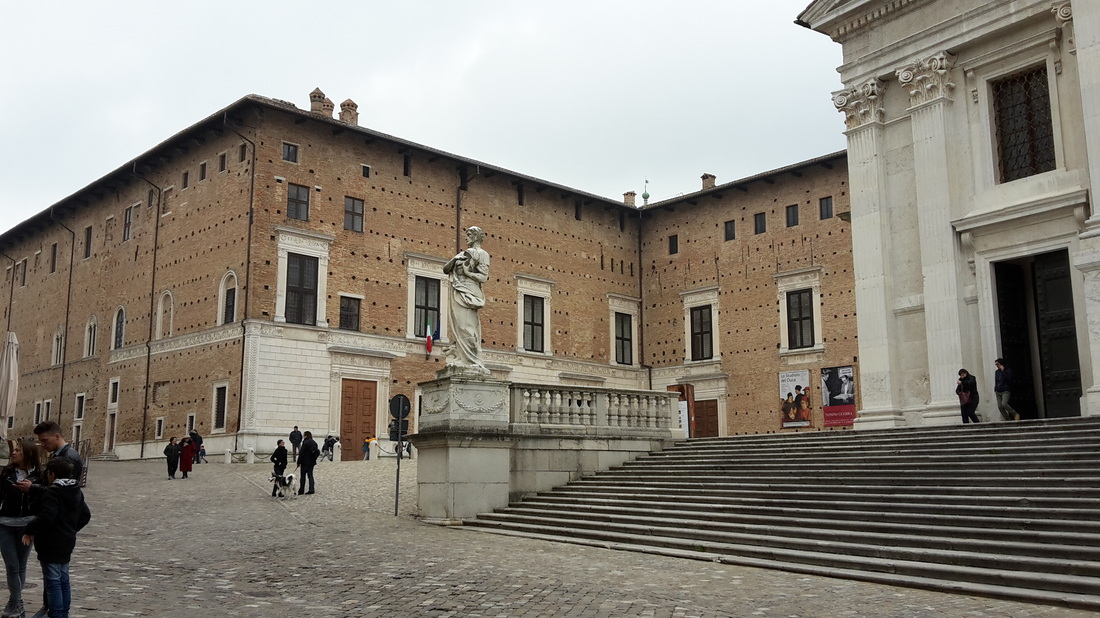
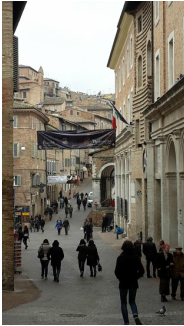
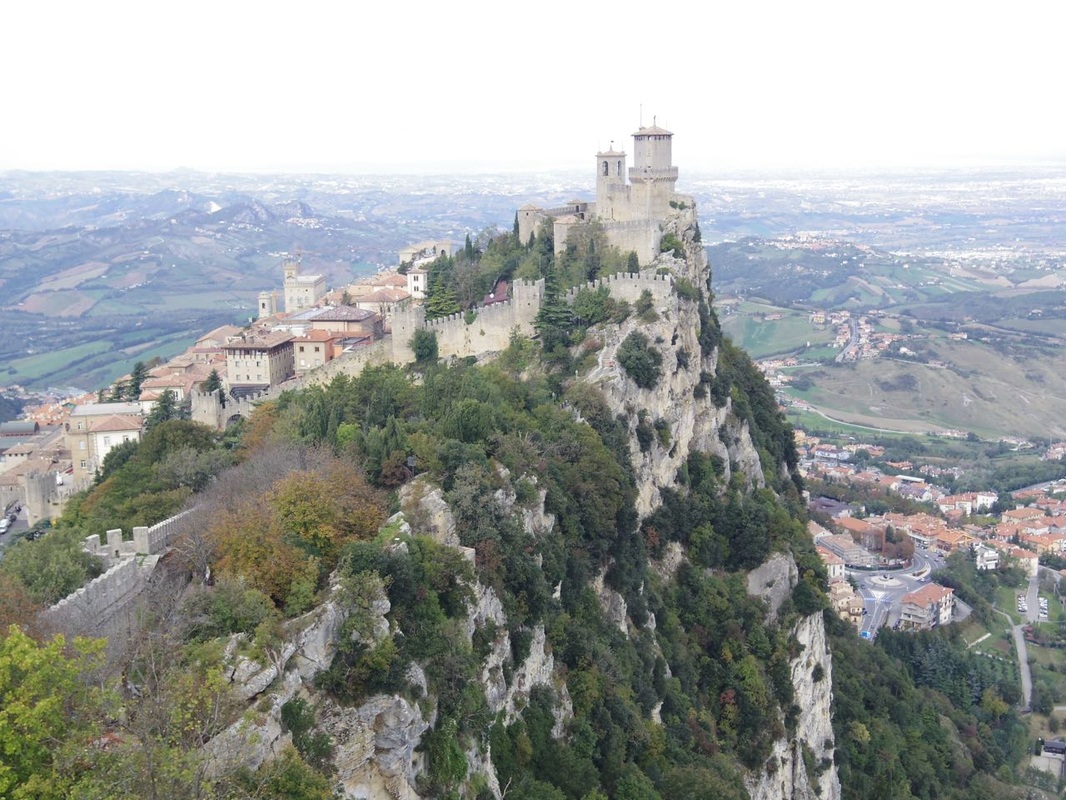
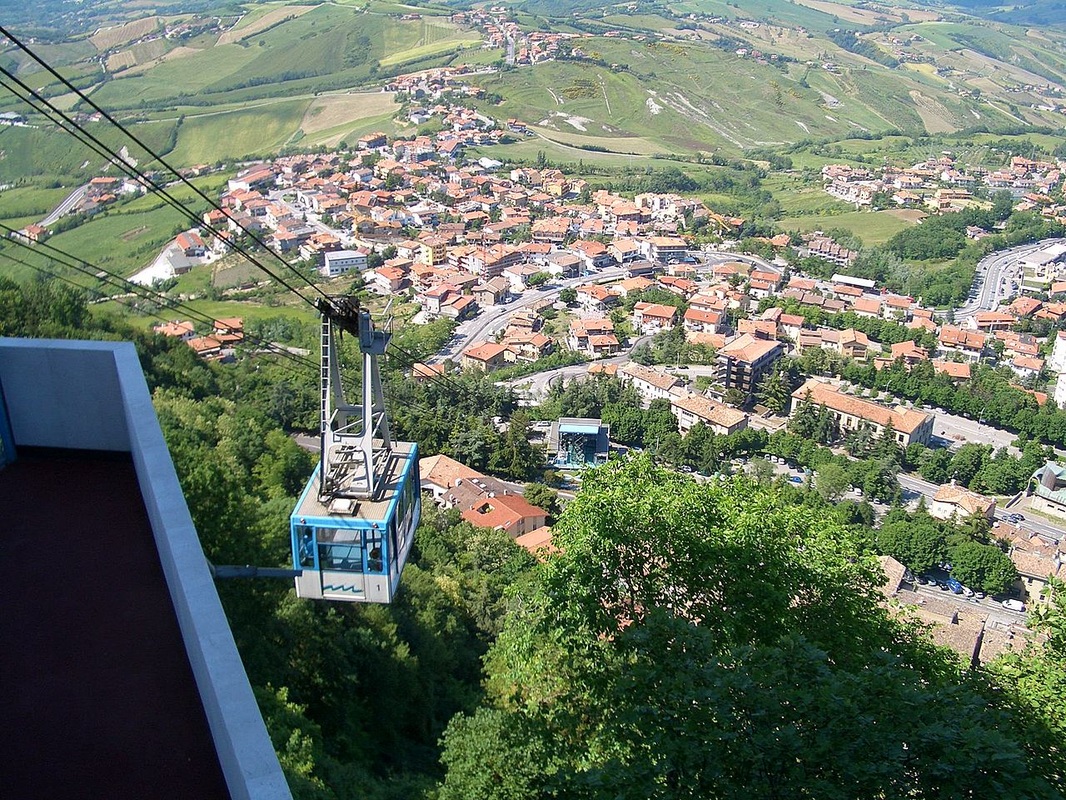
 RSS Feed
RSS Feed